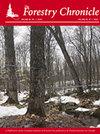农林业减少加拿大大气温室气体的潜力:与传统农业的两两比较、数据缺口和未来研究的见解
IF 0.8
4区 农林科学
Q3 FORESTRY
引用次数: 25
摘要
加拿大农业是温室气体的来源,农林业有潜力封存碳,减少农业温室气体排放。农林系统是加拿大农业景观的共同特征;然而,支持实施农林业做法以减少温室气体排放的经验数据有限。数据的短缺可能是加拿大农业领域缺乏支持利用农林业缓解温室气体的政策的一个因素。我们回顾了已发表的研究,这些研究将加拿大各地植被和土壤中的碳储量和/或农林系统中的温室气体排放量与传统农业进行了比较,目的是评估采用农林减少温室气体的效益。然后,我们确定了可能指导未来研究的数据差距和障碍。我们发现,大多数研究报告称,与草本作物相比,木本作物地区的植被和土壤有机碳储量有所增加。农林系统也在不断发展。。。本文章由计算机程序翻译,如有差异,请以英文原文为准。
The potential of agroforestry to reduce atmospheric greenhouse gases in Canada: Insight from pairwise comparisons with traditional agriculture, data gaps and future research
Canadian agriculture is a source of greenhouse gases (GHG) and agroforestry has the potential to sequester carbon (C), and mitigate agricultural GHG emissions. Agroforestry systems are common features in Canada’s agricultural landscape; however, there are limited empirical data to support implementation of agroforestry practices for GHG mitigation. This shortfall of data may be a contributing factor to the lack of policy that supports the use of agroforestry for GHG mitigation in the Canadian agricultural landscape. We reviewed published studies that compared C stocks in vegetation and soils, and/or GHG emissions in agroforestry systems to traditional agriculture across Canada, with the aims of assessing the benefit of adopting agroforestry for GHG reduction. We then identified data gaps and obstacles that could direct future research. We found that most studies reported increases in vegetation and soil organic C storage in areas with woody species compared to herbaceous crops. Agroforestry systems also r...
求助全文
通过发布文献求助,成功后即可免费获取论文全文。
去求助
来源期刊

Forestry Chronicle
农林科学-林学
CiteScore
1.20
自引率
0.00%
发文量
6
审稿时长
18-36 weeks
期刊介绍:
The Canadian Institute of Forestry has published The Forestry Chronicle, a professional and scientific forestry journal, since 1925. The Forestry Chronicle is published to provide information to forest practitioners about professional and scientific management of forests and their resources. The Forestry Chronicle provides forest practitioners in Canada and around the world with a means to communicate with their peers in the professional community.
 求助内容:
求助内容: 应助结果提醒方式:
应助结果提醒方式:


